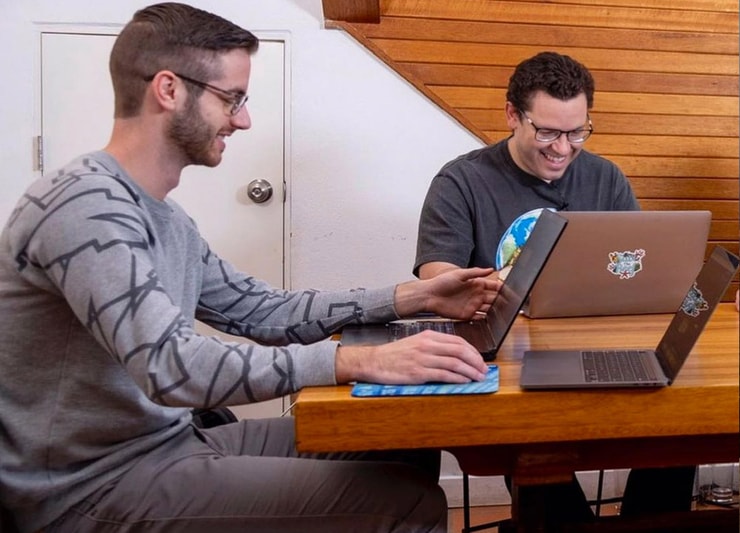ThinkorSwim Level II is a trading platform feature that provides real-time market data, including bid and ask prices, volume, and more. This tool is essential for traders who want to understand market sentiment and get the best possible prices for their trades.
Don’t scroll past this article because it’s your key to unlocking the power of ThinkorSwim Level II Quotes, a tool that can help you trade like a seasoned pro.
These are some of the questions you’ll answer by reading this article …
- What Is ThinkorSwim Level 2?
- Who Are the Key Players in ThinkorSwim Level 2 Quotes?
- What Are the Top Benefits of ThinkorSwim Level 2 Trading?
- How Should You Read ThinkorSwim Level II Price Levels?
- What Tricks Should You Look Out for in Level 2 Quotes?
- What Are Some Useful Tips for Trading with ThinkorSwim Level 2 Data?
- How Much Does ThinkorSwim Level 2 Cost?
Table of Contents
- 1 What Is ThinkorSwim?
- 2 What Does ThinkorSwim Offer?
- 3 Understanding ThinkorSwim Level II Quotes
- 4 What Are the Key Players in ThinkorSwim Level II Quotes?
- 5 Why Use ThinkorSwim Level II?
- 6 Top Benefits of ThinkorSwim Level 2 Trading
- 7 ThinkorSwim Level II Price Levels
- 8 ThinkorSwim Gadget Features
- 9 Understanding Tricks and Deception in ThinkorSwim Level II
- 10 Useful Tips to Trade with ThinkorSwim Level II Data
- 11 Level II Trading in Different Markets
- 12 Key Takeaways
- 13 FAQs
- 13.1 How Much Does ThinkorSwim Level 2 Cost?
- 13.2 How Do I Fix Delayed Data on ThinkorSwim Level 2?
- 13.3 Why Do I Experience Delayed Data on ThinkorSwim?
- 13.4 How Do I Navigate Thinkorswim’s Menu to Access Level II Quotes?
- 13.5 How Do User Rights Affect Access to Level II Quotes?
- 13.6 What Performance Statistics Are Available for Level II Quotes?
- 13.7 How Do I Request Specific Level II Data?
- 13.8 How Do Links and Content Enhance Understanding of Level II Quotes?
What Is ThinkorSwim?

ThinkorSwim is a trading platform offered by TD Ameritrade. It’s a robust platform that offers a range of tools for trading stocks, options, and futures. From technical analysis to a customizable watchlist, ThinkorSwim has got it all.
TD Ameritrade, the broker currently associated with thinkorswim, is in the process of merging into Charles Schwab. This merger is expected to be completed in late 2023, at which point thinkorswim will be available to Schwab users as well as TD Ameritrade users (whose accounts will be absorbed by Schwab).
Now, I’ve used multiple platforms over the years, and ThinkorSwim is one of the top ones out there. It’s not just about the tools; it’s about the community, the support, and the wealth of information available at your fingertips. You can even paper trade to practice your strategies without risking real money.
The platform offers web, mobile, and desktop versions, so you can trade from anywhere. And trust me, in this fast-paced world of trading, being able to access your account on the go is a big plus.
What Is ThinkorSwim Level 2?
ThinkorSwim Level 2, often abbreviated as TOS Level II, is a feature within the ThinkorSwim platform that provides a deeper look into the market. It shows real-time bid and ask prices, the volume of trades, and more. This level of market data is crucial for day traders and those looking to scalp or make quick trades.
I’ve been teaching trading for years, and one of the first things I tell my students is to understand the tools at their disposal. ThinkorSwim Level II is one such tool that can give you an edge. It’s not just about seeing the prices; it’s about understanding market sentiment and knowing when to make your move.
Remember, trading is all about information. The more you have, the better your chances of making a profitable trade. ThinkorSwim Level II provides that information in spades.
What Does ThinkorSwim Offer?
ThinkorSwim offers a plethora of features, from advanced charting tools to a comprehensive research section. But what sets it apart is its Level II quotes, which offer a window into the market’s soul. You get to see everything from bid and ask prices to the volume of shares being traded.
I’ve been transparent about my trading, posting all my wins and losses publicly. And I can tell you, having the right information at the right time is crucial. ThinkorSwim offers that and more, making it a top choice for traders looking for an edge.
Whether you’re trading stocks, options, or futures, ThinkorSwim has the tools you need to succeed. And the best part? It’s all in one platform, so you don’t have to juggle multiple accounts or apps.
Understanding ThinkorSwim Level II Quotes
ThinkorSwim Level II quotes provide a real-time list of all the bids and asks for a particular stock. This is crucial because it allows you to see where the market is moving. You get to see the order book, which shows you the demand and supply at various price levels.
ThinkorSwim Level II quotes give you an understanding of the market’s players. You see the market makers, the ECNs, and even the wholesalers. It’s like having a map to the market.
Of course, problems with lag can affect your understanding, even when doing strategic backtesting with thinkorswim’s OnDemand feature. These glitches can affect your trading, and it’s crucial to know how to navigate them. I’ve got you covered with a comprehensive blog post that addresses these issues. Want to troubleshoot like a pro? Here’s your go-to guide for Thinkorswim OnDemand Problems.
What Are the Key Players in ThinkorSwim Level II Quotes?

ThinkorSwim Level II quotes are populated by several key players, each with their roles and functions. Understanding these players can give you a significant edge in the market.
Market Makers (MM)
Market Makers are firms or individuals that provide liquidity to the market. They buy and sell stocks to facilitate trading. In ThinkorSwim Level II, you’ll often see their quotes, giving you an idea of the market sentiment.
More Breaking News
- XP Inc.: Is Now the Right Time to Navigate Its Market Waves?
- Is It Itau Unibanco’s Time to Shine After Recent Financial Insights?
- Revving Up or Cooling Off? Dissecting the Spike in Globalstar Inc. (GSAT) Today
Electronic Communication Networks (ECN)
ECNs are automated systems that match buy and sell orders. They play a crucial role in ThinkorSwim Level II by providing a transparent and fast way to execute trades.
Wholesalers (Order Flow Firms)
Wholesalers, also known as order flow firms, are companies that execute orders on behalf of retail brokers. They play a role in ThinkorSwim Level II by providing additional liquidity and often better prices than what you’d get from market makers alone.
The Ax
The Ax is the market maker that plays the biggest role in moving a specific stock. In ThinkorSwim Level II, identifying the Ax can give you valuable insights into where the stock might be headed.
Knowing who the Ax is can help you predict future price movements, giving you an edge in your trading strategy.
Why Use ThinkorSwim Level II?
ThinkorSwim Level II is not just another feature; it’s a necessity for serious traders. It provides a wealth of information that can help you make informed trading decisions. From understanding market sentiment to getting the best prices, ThinkorSwim Level II offers it all.
I’ve been trading for years, and I’ve seen traders come and go. The ones who stick around are the ones who understand their tools. ThinkorSwim Level II is one such tool that can make or break your trading career.
So why use it? Because it gives you the edge you need to succeed. And in this game, every edge counts.
Take a look at how I use Level 2 quotes in a live trade:
Top Benefits of ThinkorSwim Level 2 Trading
ThinkorSwim Level 2 trading offers several benefits that can enhance your trading experience and results. Let’s break them down.
More Information
One of the top benefits is the wealth of information it provides. You get real-time quotes, volume data, and a list of market makers. This information can be crucial in making quick and informed trading decisions.
To survive the trading battlefield, you need information. ThinkorSwim Level II provides that in spades.
Easier to Understand Market Sentiment with Level 2 Market-Centric Data
Another benefit is the ability to gauge market sentiment. Level 2 data shows you the depth of the market, including the number of buy and sell orders at different price levels. This can help you understand where the market is likely to go.
In my years of trading, understanding market sentiment has been key to my strategy. It helps me know when to enter and exit trades, cutting losses and maximizing gains.
Access to the Best Prices
With Level 2 data, you get access to the best prices available in the market. You can see the highest bid prices and the lowest ask prices, allowing you to make trades at the most favorable rates.
I’ve always focused on keeping my risk tight. And getting the best prices is a big part of that. With ThinkorSwim Level II, you’re not shooting in the dark; you’re making informed decisions.
ThinkorSwim Level II Price Levels

Understanding the price levels in ThinkorSwim Level II can give you a significant edge in your trading. Let’s dive into what these levels mean.
Lowest Price
The lowest price in Level II data is the lowest ask price currently available for the stock. This is the price at which you can buy the stock. Knowing this can help you set your trading strategy.
Knowing the lowest price can help you set your buy orders effectively, minimizing risk and maximizing potential gains.
Trading Platforms
ThinkorSwim Level II is available on various trading platforms, including desktop, mobile, and web. Each platform offers a different user experience but provides the same crucial data.
In my experience, the platform you choose can make a big difference in your trading efficiency. So choose wisely and make sure it fits your trading style.
Block Trades
Block trades in Level II data refer to large-volume trades. These are often made by institutional investors and can significantly impact the stock’s price.
Block trades are big prints that can give you insights into where the stock might be headed.
Sales Window
The sales window in ThinkorSwim Level II shows you the most recent trades that have been executed. This includes the price, the number of shares, and the time of the trade.
In my years of trading, the sales window has been a valuable tool. It gives you a real-time look into the market, helping you make quick decisions.
Separate Window
ThinkorSwim Level II data can be viewed in a separate window, allowing you to focus solely on the market data. This can be particularly useful for day traders who need to make quick decisions.
Real-Time Quotes
One of the biggest advantages of ThinkorSwim Level II is the real-time quotes. You get up-to-the-second data, allowing you to make timely trades.
I’ve been right about 70% of the time in my trades, and real-time quotes have played a big role in that. They allow me to act quickly, cutting my losses and taking my gains.
Market Makers
As mentioned earlier, market makers play a crucial role in Level II data. They provide liquidity and set the bid and ask prices. Understanding their role can give you an edge in your trades.
In my experience, understanding market makers is key to understanding the market. They’re the ones moving the prices, and knowing their moves can help you make yours.
ThinkorSwim Gadget Features

ThinkorSwim offers several gadgets that can enhance your trading experience. These gadgets provide additional data and tools that can help you make informed trading decisions.
Technical Indicators
One of the key gadget features in ThinkorSwim is the range of technical indicators available. From moving averages to RSI, you have a plethora of options to aid your analysis.
I’ve been teaching trading for years, and technical indicators are one of the first things I introduce to my students. They’re crucial tools that can help you understand market trends and make informed decisions.
If you’re seeking alternatives to day technical indicators, swing trading indicators might be your next stop. These indicators can offer a different perspective on market trends and are particularly useful for traders looking to hold positions for several days. Interested in expanding your technical analysis toolkit? Check out my blog post on Swing Trading Indicators.
Markets in Stocks/Depth of Market
Another useful gadget is the Markets in Stocks or Depth of Market feature. This shows you the number of buy and sell orders at different price levels, giving you a deeper understanding of market sentiment.
In my years of trading, understanding market depth has been crucial. It gives you a real-time look into the market, helping you make quick and informed decisions.
Market Depth/Market Participant
The Market Depth or Market Participant gadget shows you the list of market makers and other key players in the market. This can be particularly useful for understanding who is moving the market and how.
Understanding Tricks and Deception in ThinkorSwim Level II

ThinkorSwim Level II is a powerful tool, but it’s not without its pitfalls. Understanding the tricks and deceptions that can occur can save you from making costly mistakes.
Another deceptive tactic you might encounter is the TTM Squeeze. This is a volatility indicator that can sometimes be manipulated by traders. Knowing how to interpret it correctly can save you from making costly mistakes. Want to avoid getting squeezed out? Dive into my blog post on TTM Squeeze.
Hiding Order Size
One common trick is hiding order size. Market makers and other traders can hide the true size of their orders to manipulate the market. Being aware of this can help you make more informed decisions.
I’ve exposed promoters and thieves in the market, and let me tell you, understanding these tricks is crucial. It can help you avoid falling into traps and making costly mistakes.
Order Sizes and Timing
Another trick is manipulating order sizes and timing to create a false sense of market sentiment. Traders can place large orders and then quickly cancel them to deceive other traders.
In my experience, understanding the timing and size of orders can give you valuable insights into the market. It can help you avoid falling for these tricks and make more informed trading decisions.
Trading Through ECNs
Some traders use ECNs to hide their trades and deceive the market. Being aware of this can help you make more informed decisions and avoid falling for these tricks.
I’ve always focused on transparency in my trading — but understanding the lack of transparency in others is just as important. It allows you to see through the deception and make informed decisions.
Useful Tips to Trade with ThinkorSwim Level II Data

Trading with ThinkorSwim Level II data can be highly beneficial, but it’s essential to know how to use it effectively. Here are some tips to help you make the most of this powerful tool.
Low Liquidity Can Be Useful
Low liquidity in a stock means there are fewer buyers and sellers, which can result in larger price swings. While many traders shy away from low liquidity stocks due to the increased risk, these stocks can actually offer unique opportunities for quick gains. ThinkorSwim Level II can help you identify these stocks by showing you the volume and depth of the market.
Scalping Trading
Scalping is a trading strategy that involves making quick trades to profit from small price movements. ThinkorSwim Level II is perfect for this, as it provides real-time data that can help you make quick decisions.
Trading Breakouts
Trading breakouts involves buying a stock as it breaks out of a trading range. ThinkorSwim Level II can help you identify these breakouts by showing you the volume and depth of the market.
Follow the Prints
ThinkorSwim Level II shows you the most recent trades — the prints — allowing you to follow the market’s movements and make informed decisions.
In my experience, following the prints can give you valuable insights into the market. It shows you where the market is headed, helping you make timely and informed decisions.
Level II Trading in Different Markets

ThinkorSwim Level II is not just for stock trading; it’s also useful for trading options, futures, and even forex. Let’s dive into how it can be used in different markets.
Level 2 Option Trading
ThinkorSwim Level II offers valuable data for option trading, including real-time quotes and market depth. This can help you make informed decisions when trading options.
Level 2 Data in the Stock Market
As you know, ThinkorSwim Level II is a powerful tool for stock trading. It provides real-time quotes, market depth, and a list of market makers, giving you a significant edge in the market.
Level 2 Data Futures Trading
ThinkorSwim Level II is also useful for futures trading. It provides real-time quotes and market depth, allowing you to make quick and informed decisions.
Level 2 Data in the Forex Market
Forex trading involves buying and selling currencies, and ThinkorSwim Level II can be a valuable tool in this market as well. It provides real-time quotes and market depth, allowing you to make quick and informed decisions.
Key Takeaways

ThinkorSwim Level II is a powerful tool that can give you a significant edge in your trading. It provides real-time quotes, market depth, and a list of market makers, allowing you to make informed decisions.
I’ve been trading for years, and I’ve seen traders come and go. The ones who stick around are the ones who understand their tools. ThinkorSwim Level II is one such tool that can make or break your trading career.
So why use it? Because it gives you the edge you need to succeed. And in this game, every edge counts.
Trading isn’t rocket science. It’s a skill you build and work on like any other. Trading has changed my life, and I think this way of life should be open to more people…
I’ve built my Trading Challenge to pass on the things I had to learn for myself. It’s the kind of community that I wish I had when I was starting out.
We don’t accept everyone. If you’re up for the challenge — I want to hear from you.
Apply to the Trading Challenge here.
Trading is a battlefield. The more knowledge you have, the better prepared you’ll be.
Have you used thinkorswim Level 2? Let me know in the comments — I love hearing from my readers!
FAQs
How Much Does ThinkorSwim Level 2 Cost?
ThinkorSwim Level II is generally included with a TD Ameritrade account, but some features may require a subscription. The cost can vary, so it’s best to check with TD Ameritrade for the most current pricing.
How Do I Fix Delayed Data on ThinkorSwim Level 2?
If you’re experiencing delayed data on ThinkorSwim Level II, the first step is to check your internet connection. If that’s not the issue, you may need to contact TD Ameritrade’s support for assistance.
Why Do I Experience Delayed Data on ThinkorSwim?
Delayed data on ThinkorSwim can occur for various reasons, including internet connectivity issues or problems with the platform itself. If you’re experiencing this, it’s crucial to address it immediately.
In thinkorswim by TD Ameritrade, you’ll find the Level II quotes under a specific menu. To get there, you’ll need to login first. Once logged in, follow the links provided in the menu. If you’re having trouble, look to the left of your screen for further navigation options. If someone has shared a direct link to the Level II quotes, you can also use that to navigate.
How Do User Rights Affect Access to Level II Quotes?
The ability to access Level II quotes may vary depending on the rights given to specific persons or members. Certain securities may come with risks that limit their availability to specific members. A solicitation or recommendation might also change the security settings, restricting or expanding access.
What Performance Statistics Are Available for Level II Quotes?
Thinkorswim provides comprehensive statistics related to Level II quotes. These can be found under the ‘exchange’ section and provide details about the performance of various securities. To better understand these statistics, you can also look for posts or content provided by the company.
How Do I Request Specific Level II Data?
If you have a particular question about Level II quotes or need specific data, you can send a request through thinkorswim. Developers or other experienced members might be able to help you in this matter. Make sure to use the example data as a guide to formulate your request.
How Do Links and Content Enhance Understanding of Level II Quotes?
Links and other forms of content can enhance your understanding of Level II quotes on TD Ameritrade’s thinkorswim platform. For example, blog posts or articles from the company might give insights into the securities being traded. If you need more information, look for relevant links in the menu or use the search function to find what you need.




Leave a reply